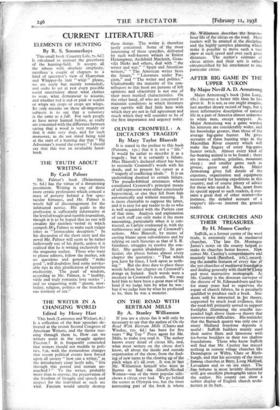SUFFOLK CHURCHES AND
THEIR -..TREASURES....
- • By H. Munro Cautley
"Suffolk, as a former centre of the wool
trade is extremely _rich mediaeval chtircles, _The late Dr. Montague James's :notes oh the county helpeti to make its churches better known. Nhtit comes Mr. Cautley's. coinpreliaiSsive and masterlr book (Botsford, :21%.),recorcl- ixig the:neitable features- of every one pf the goo churches of mediaeval founciagoll. and dealing generally with theig and most instructive monograph. - As Mr. Cautley is the diocesan surveyor of the dioceSe of St. Edmundsbury and has for many . years had to supervise the repair of church fabrics, he is peculiarly -qualified'to produce such a book. Stu- dents will be interested in his theory, supported by much local evidence, that the rood-loft primarily served to support footlights illumining the crucifix sus- pended high above them—a theory that removes many difficulties. His reminder that the Barnack quarry was only one of many Midland freestone deposits is useful : Suffolk builders mainly used their native flints and limestone with ice-borne boulders in their too shallow foundations. Those who know Suffolk will find that Mr. Cautley has missed nothing in remote village churches like Dennington or Wilby, Clare or Blyth- burgb, and that his accounts of_ the more famous churches at Rtiry, Aing_Melfhid; Laveuham and. so on are exact. The fine =volume ikmost lavishly - illustrated With 40o excellefit photographs' taken by the author. No county can show a nobler display of English church archi-
__tectUrg.a.t.ittaMtm_ _ . . . _


















































 Previous page
Previous page